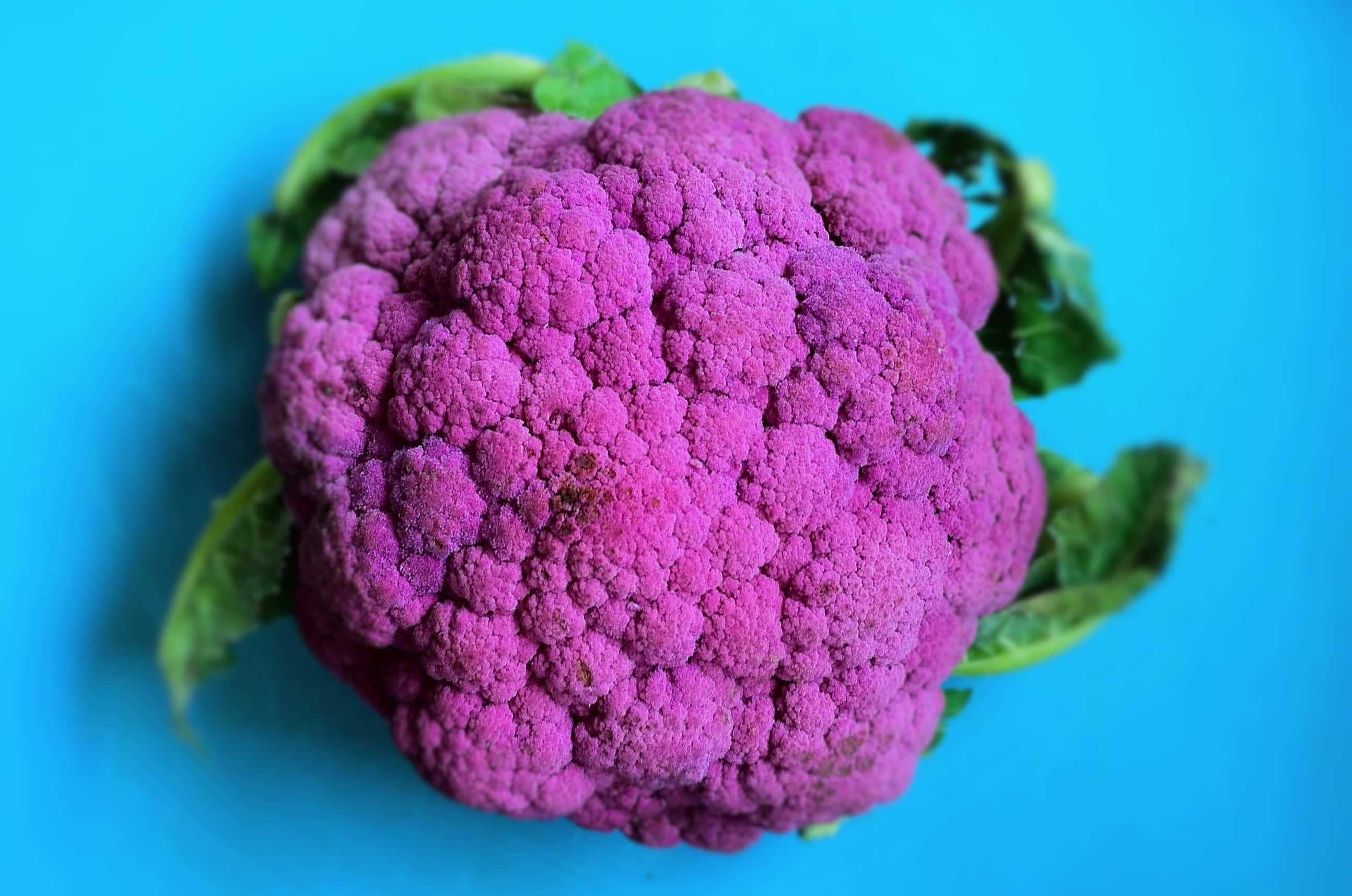
Purple cauliflower might look like something out of a sci-fi movie, but it's very real and packed with benefits. What makes purple cauliflower purple? The vibrant hue comes from anthocyanins, the same antioxidants found in red cabbage and blueberries. These compounds not only give it color but also offer health perks. Purple cauliflower isn't just a pretty face; it's also rich in vitamins C and K, fiber, and folate. Whether roasted, steamed, or eaten raw, this veggie adds a splash of color and nutrition to any meal. Ready to learn more about this colorful cruciferous vegetable? Let's dive into 20 fascinating facts about purple cauliflower!
Key Takeaways:
- Purple cauliflower is not only vibrant but also packed with nutrients like vitamins C and K, making it great for immune function and bone health. It's low in calories and high in fiber, making it a healthy and colorful addition to any meal.
- Whether roasted, steamed, grilled, or eaten raw, purple cauliflower offers a fun and rewarding cooking experience. Its anti-inflammatory and heart health benefits make it a valuable and delicious addition to any diet.
What is Purple Cauliflower?
Purple cauliflower is a vibrant and nutritious vegetable that stands out in any dish. Its unique color and health benefits make it a favorite among food enthusiasts. Let's dive into some fascinating facts about this colorful veggie.
-
Natural Pigment: The purple hue comes from anthocyanins, natural pigments also found in red cabbage and blueberries.
-
Nutrient-Rich: Packed with vitamins C and K, purple cauliflower supports immune function and bone health.
-
Antioxidant Powerhouse: Anthocyanins are powerful antioxidants that help protect cells from damage.
-
Low-Calorie: With only about 25 calories per cup, it's a great option for those watching their calorie intake.
-
Fiber-Rich: High in dietary fiber, it aids digestion and helps maintain a healthy gut.
How to Cook Purple Cauliflower
Cooking purple cauliflower can be a fun and rewarding experience. Its vibrant color adds a pop to any meal, and it can be prepared in various ways.
-
Roasting: Roasting enhances its natural sweetness and gives it a slightly crispy texture.
-
Steaming: Steaming preserves most of its nutrients and keeps it tender.
-
Grilling: Grilling adds a smoky flavor that pairs well with its natural taste.
-
Raw: Eating it raw in salads or as a snack retains all its nutrients and provides a satisfying crunch.
-
Mashed: Mashed purple cauliflower is a colorful and healthy alternative to mashed potatoes.
Where to Find Purple Cauliflower
Finding purple cauliflower might seem challenging, but it's becoming more common in various markets.
-
Farmers' Markets: Local farmers' markets often carry unique and seasonal produce, including purple cauliflower.
-
Grocery Stores: Many grocery stores now stock it, especially in the organic or specialty produce sections.
-
Online: Online grocery delivery services often offer a wide range of fresh produce, including purple cauliflower.
-
Specialty Stores: Health food stores and specialty grocers are likely to have it in stock.
Health Benefits of Purple Cauliflower
Beyond its eye-catching color, purple cauliflower offers numerous health benefits that make it a valuable addition to any diet.
-
Anti-Inflammatory: The anthocyanins in purple cauliflower have anti-inflammatory properties that can help reduce inflammation in the body.
-
Heart Health: Consuming purple cauliflower may support heart health by improving blood pressure and reducing the risk of cardiovascular diseases.
-
Cancer Prevention: Some studies suggest that the antioxidants in purple cauliflower may help reduce the risk of certain cancers.
-
Detoxification: It contains compounds that support the body's natural detoxification processes.
-
Weight Management: Its low-calorie and high-fiber content make it an excellent choice for those looking to manage their weight.
-
Eye Health: The antioxidants in purple cauliflower can also support eye health by protecting against oxidative stress.
Purple cauliflower is more than just a pretty vegetable. Its unique color, versatile cooking options, and numerous health benefits make it a must-try for anyone looking to add a nutritious and delicious twist to their meals.
The Final Bite
Purple cauliflower isn't just a pretty face. Packed with antioxidants, it's a nutritional powerhouse. Whether you're roasting, steaming, or eating it raw, this vibrant veggie adds a pop of color and a health boost to any meal. Its unique hue comes from anthocyanins, the same compounds found in blueberries and red cabbage. Plus, it's a great source of vitamin C, fiber, and potassium.
Next time you're at the grocery store, grab some purple cauliflower. Not only will it make your plate look Instagram-worthy, but your body will thank you for the extra nutrients. So, don't shy away from this colorful cruciferous vegetable. Give it a try and enjoy the benefits it brings to your diet. Happy eating!
Frequently Asked Questions
Was this page helpful?
Our commitment to delivering trustworthy and engaging content is at the heart of what we do. Each fact on our site is contributed by real users like you, bringing a wealth of diverse insights and information. To ensure the highest standards of accuracy and reliability, our dedicated editors meticulously review each submission. This process guarantees that the facts we share are not only fascinating but also credible. Trust in our commitment to quality and authenticity as you explore and learn with us.


